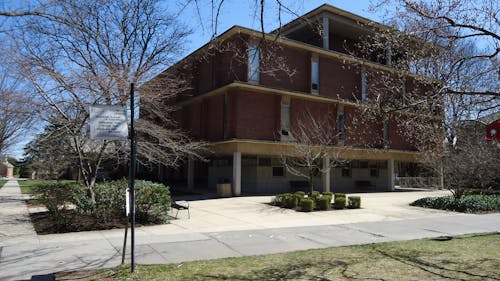White teachers three times more negative with Black students, Rutgers study finds

A Rutgers professor’s research on education systems found that that white teachers were three times more negative with Black students than with white students, showing that critical phases of development for Black children could be hindered through daily interactions with their teachers.
Dan Battey, an associate professor in the Graduate School of Education, analyzed a data study of the interactions between teachers and students across racial lines. He said most of the research literature was about discipline within schools leading to suspension, and also the school-to-prison pipeline.
What researchers have not looked at is classrooms, so Battey’s data shows how small behaviors end up escalating to become more intense issues, particularly with white teachers.
His study, titled “Racial Mis(Match) in Middle School Mathematics Classrooms: Relational Interactions as a Racialized Mechanism,” focuses on how white and Black students and white and Black teachers interact in both urban and suburban settings, specifically in mathematics classes.
“We were interested in how the suburban-urban split kind of functions as well as the teacher-race (split) within the urban space. There weren’t many rural schools,” Battey said.
Measuring the dimensions of the behavior, contributions and emotions of students, the data for his study found that white teachers were three times more negative with Black students, which played out in terms of how they dealt with student contributions in math classes.
“They were more negative in handling student emotions. They are more negative in interacting with student ability and how they framed student ability than Black teachers on basically every dimension,” he said.
On the other hand, Black teachers were found to be less negative toward Black students. They were equally as positive as white teachers though. Battey said these teachers were in the same schools and teaching kids from the same neighborhoods, yet they were acting differently, indicating that there were possibly internalized stereotypes about who the students were.
To remedy negative interactions within classrooms, Battey said viewing students across racial lines as more capable is a possible solution. Another remedy is hiring more Black teachers.
“I think the best way to think about that is through training teachers from the community and bringing them back. You can still have some cultural dissonance there, but it's really, to me, about bringing in teachers who are going to view these kids as having resources,” he said. “So that the students can draw on resources the kind of succeed in believing in them.”
To obtain the information, Battey and his colleagues coded videos for each student-teacher interaction. The data he collected was from eight different schools, and within these schools there were only small amounts of Black teachers.
Though the data set also included video data from English language arts classes, Battey’s study opted to focus on mathematics.
“I think oftentimes one of the reasons to do this work in math is because we think of it as cultureless. Yet, there's all sorts of ways that culture comes in that classroom,” he said. “We see the patterns of race playing out in mathematics and yet still continue to frame it as cultural and neutral. Yet, the teaching of math and the encouragement or discouragement for math is entirely a social phenomenon.”



